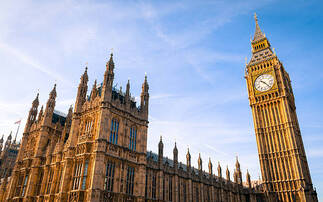Mark Canning explores the introduction of the Scottish rate of income tax and its "interesting" consequences for pension tax relief...
OK, my fellow Scots... firstly the good news!
From 6 April 2016 the Scottish rate of income tax (SRIT) has at last been implemented.
This results in the income tax rates set by UK government that apply to the rest of the UK (rUK), being reduced by 10p in the pound.
The not so good news is that the Scottish government then imposes a SRIT on top of this. For 2016/17 it has kept SRIT at 10% - so overall exactly the same as the rUK rate.
While the Scottish government does not have the power to vary SRIT by tax band, the Scotland Act 2016 provides the Scottish parliament with additional powers.
These include the ability to set the rates and thresholds that will apply to all non-savings non-dividend income tax paid by Scottish taxpayers.
And this is where life might just be about to get "interesting" in the field of pension taxation! Let's take a look at some points to consider...
How do HMRC determine "who" a Scottish taxpayer is?
SRIT will only be payable by Scottish taxpayers. HM Revenue & Customs (HMRC) will determine who falls under that definition by virtue of where an individual's main place of residence is. HMRC will write to those affected by the new tax.
In addition, in order to be deemed a Scottish taxpayer, the person must also be UK resident for tax purposes.
Individuals with more than one place of residence in the UK will need to determine which of these has been their "main" place of residence - i.e. which they have resided in for the largest part of the tax year.
If a main place of residence cannot be identified, then individuals will have to count the days they spend in Scotland versus rUK. If they spend more days in Scotland they will be a Scottish taxpayer.
Any individual who meets the definition of a Scottish taxpayer will be deemed so for the whole tax year. From 2016 all Scottish residents will have an "S" prefix added to their tax code to help identify them.
How do the changes impact pension schemes & providers?
The government has agreed that registered pension scheme administrators and pension providers have until April 2018 to put in place the changes necessary to their IT systems that will allow them to claim... at the correct rate. Until then all relief at source (RAS) claims will be made at the rUK basic rate.
From 2018, the main impacts on tax relief will be on schemes and arrangements which operate on a RAS basis - i.e. mainly "contract based" schemes such as personal pensions including self-invested personal pensions.
Such schemes will need to operate different "grossing up" for Scottish taxpayers from rUK if and when Scotland has different income tax rates.
More immediately, from 6 April 2016, pension providers will need to be able to tax annuity payments and drawdown income payments subject to PAYE tax using the Scottish rates for Scottish taxpayers. They will need to do this using ‘S' tax code identifiers which will be obtained from information provided by HMRC.
Winners and losers...
Due to the fact that the same SRIT has to apply across all tax bands this will result in differing treatment of members depending on their tax position when making contributions vs when they start to draw income.
For example... a "basic rate" taxpayer with a SRIT of 12p will benefit from the additional 2p in the £1 tax relief for any contributions they make - i.e. an additional 10% vs rUK.
However, a higher rate taxpayer would only see a 5% increase in their rate of tax relief (i.e. from 40p to 42p).
If we look at the impact on taxable income if SRIT is any rate higher than 10% this disproportionately impacts on basic rate taxpayers - i.e. in the example above they would suffer a 10% increase in income tax levied on income versus a comparable 5% increase for a higher rate taxpayer.
The converse of the above is true should SRIT be at any level less than 10p.
For example, an 8p rate would mean a 10% reduction in tax relief on contributions for a basic rate taxpayer but a lower liability to income tax by 10% on any pension income drawn.
Higher rate taxpayers would "only" see a 5% reduction in tax relief on contributions but a relatively lower decrease in their rate of tax paid on pension income of 5%.
In the context of pension freedom let's assume a retiree has a £1m fund and draws full pension commencement lump sum of £250,000.
The tax differential for a Scottish taxpayer depending on whether the SRIT was 5 or 15p would be £75,000!
What impact might that have on the lifetime allowance going forward... might we see different rates applicable north and south of the border?
It is worth noting the regulations do not "cap" the rate of SRIT.
It will be interesting to see how this plays out once implemented... and if we add the prospect (deferred not abandoned?) of "flat" rate relief in rUK there lies ahead some interesting times and planning considerations!
Mark Canning is national head of business development at Yorsipp













